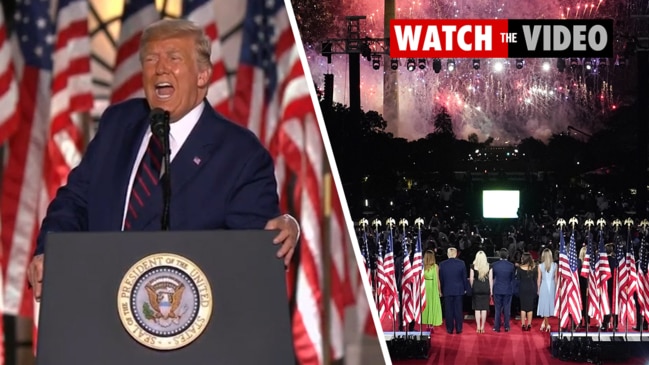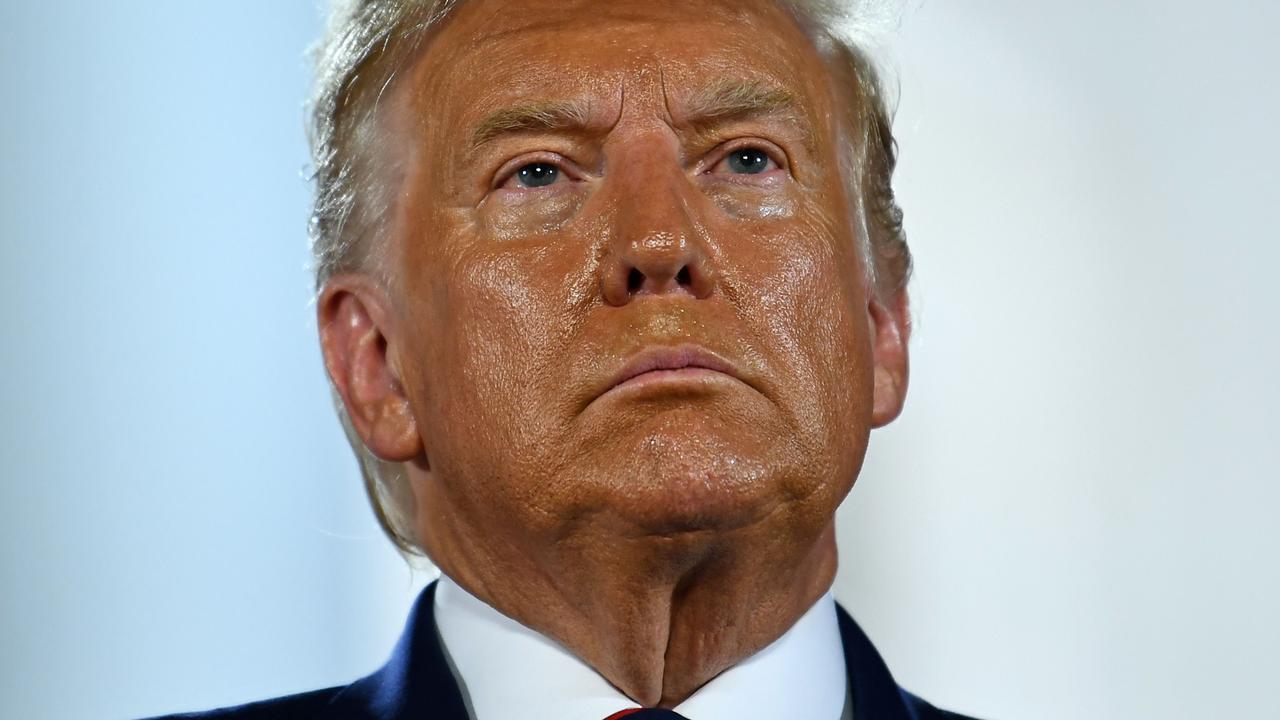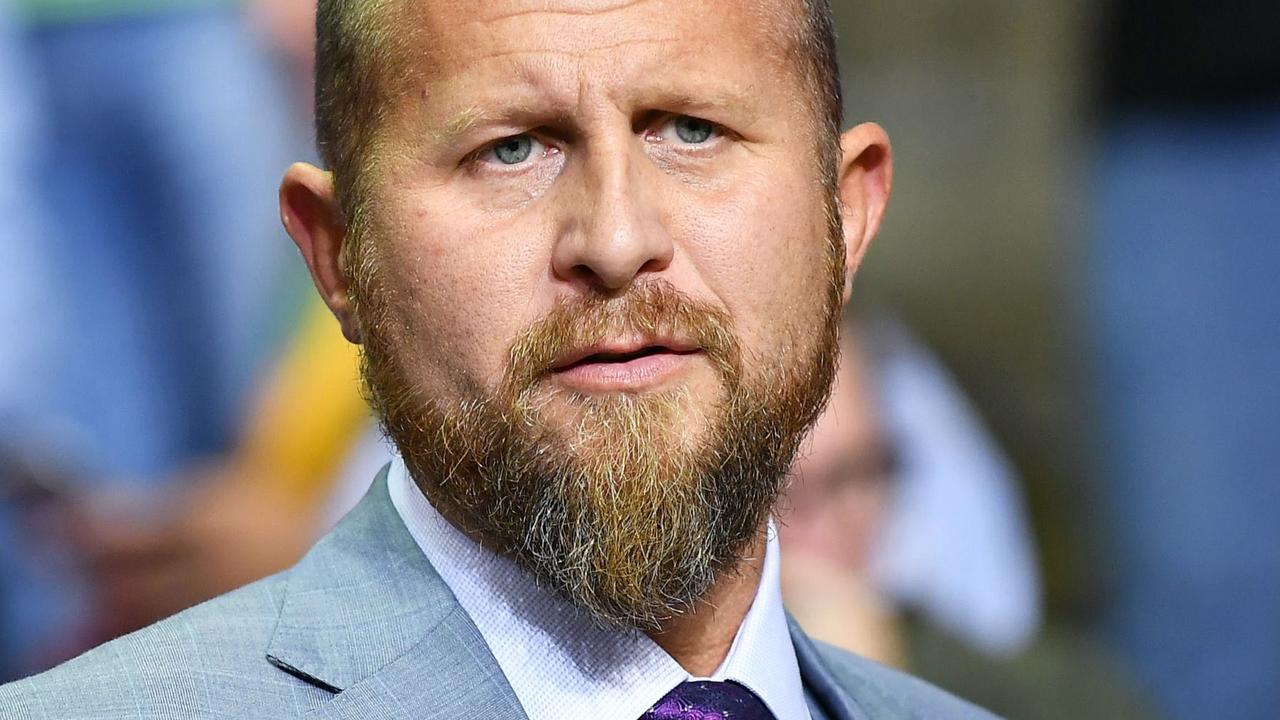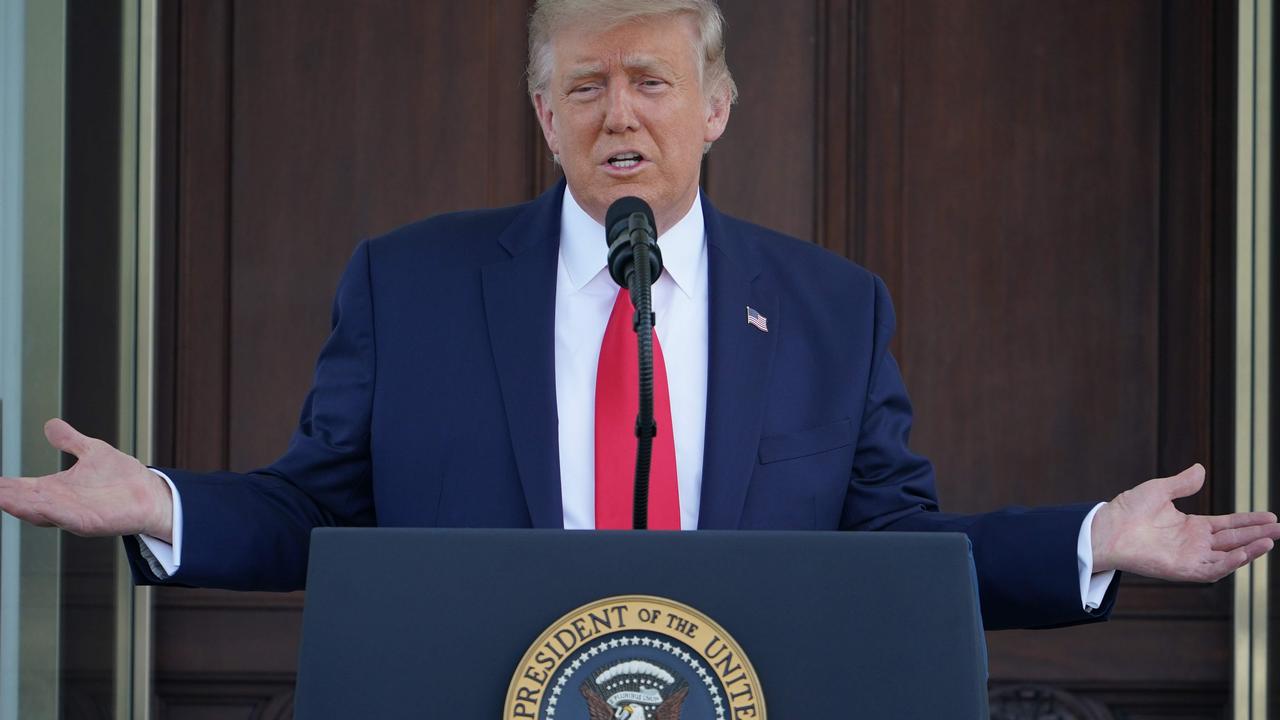US election fundraising: Donald Trump’s campaign has spent $800 million
A few months ago, Donald Trump’s election campaign had a huge money advantage over his opponent. Now it’s almost gone. What happened?

A few months ago, US President Donald Trump had one massive, indisputable advantage over his election opponent, Joe Biden.
Money.
When Mr Biden wrapped up the Democratic presidential nomination in April, having expended most of his energy and money on an exhausting primary contest, Mr Trump’s re-election campaign had almost $US200 million more cash on hand.
The gap in resources between the two campaigns seemed insurmountable.
It was the result of a hugely impressive fundraising effort from the President, which started years ago and has not stopped since.
In all, between the start of 2019 and the end of July this year, the Trump campaign and the Republican Party raised a staggering $1.1 billion.
Here’s another staggering figure though: $800 million. That is how much the campaign has already spent, with two months still to go until polling day.
Where did all the money go? We’ll get to that in a moment.
Meanwhile, the Biden campaign is catching up.
Mr Biden and the Democratic Party recently revealed they had brought in $364 million in August alone, blowing away the previous one-month fundraising record of $193 million, which was set by Barack Obama in 2008.
The Trump campaign has yet to report its own August figure, but the situation is worrying enough for the President that he is considering pouring $100 million of his own personal fortune into the campaign’s coffers, according to Bloomberg News.
RELATED: The massive money advantage Trump had over Biden

The baffling “evaporation” of Mr Trump’s cash advantage was the subject of a thorough, in-depth investigation published by The New York Times this week.
Senior reporters Maggie Haberman and Shane Goldmacher interviewed dozens of current and former campaign workers, and examined thousands of items in filing documents.
“Some people inside the campaign are forecasting what was once unthinkable – a cash crunch with less than 60 days until the election,” they wrote.
The report included a bunch of examples of the extravagant spending Mr Trump’s campaign engaged in under the direction of its original manager, Brad Parscale, whom the President rather pointedly replaced in mid-July.
Here are some of the highlights.
The campaign paid $11 million to air TV ads during the Super Bowl, dwarfing in a single evening the total amount it had spent on ads in several crucial swing states.
It blew more than a million dollars airing ads in the Washington D.C. media market, where Mr Trump resides and watches TV, even though the American capital is overwhelmingly Democratic. Hillary Clinton won more than 90 per cent of the vote there in 2016.
In all, more than $100 million went into TV ads before the two major parties’ conventions, which are generally seen to mark the point at which voters actually start to pay attention to the election.
About $800,000 was spent boosting Mr Parscale’s own social media posts, which featured Trump campaign ads.
More than $30 million went towards manufacturing Trump merchandise, like his famous “Make America Great Again” caps.
The campaign incurred $21 million in legal costs, covering Mr Trump’s defence in the impeachment trial and other investigations.
It blew six million dollars on “mementos” for donors, like White House themed M&Ms.
Yondr, a company that makes magnetic pouches, got more than $100,000. The pouches were used during fundraisers to ensure donors could not secretly record the President and then leak his comments to the media.
The campaign blew $325,000 on reserving the Ritz-Carlton, near Jacksonville, for the Republican National Convention after Mr Trump decided to move it from North Carolina to Florida. The event never happened there, due to the coronavirus, but the campaign is not getting its money back.
It spent $156,000 organising for planes to pull aerial banners behind them.
And in a few of the chunkier expenses, it spent $145 million on costs related to sending Americans direct mail, $40 million acquiring voters’ email addresses, and tens of millions on online advertising asking people to become donors.

RELATED: Yes, Trump’s polls are bad, but can they be trusted?
The result of all this spending, which drained most of the campaign’s $1.1 billion war chest, is a race that Mr Trump appears to be losing.
The current RealClearPolitics polling average has Mr Biden leading the President by 7.1 per cent. The numbers are tighter when you look only at the crucial battleground states, with Mr Biden leading by 3.2 per cent – and after the last few years, I think all of us are treating the polls with a healthy degree of scepticism anyway.
Nevertheless, Mr Trump finds himself stuck in a situation where those polls would need to be catastrophically wrong – worse than in 2016 – for him to win. That doesn’t feel like a great return on investment.
“If you spend $800 million and you’re 10 points behind, I think you’ve got to answer the question, ‘What was the game plan?’” veteran Republican political strategist Ed Rollins told The Times.
“I think a lot of money was spent when voters weren’t paying attention.”
He went on to accuse Mr Parscale of spending “like a drunken sailor”.
The paper also interviewed Mr Parscale, giving him a chance to defend his decision-making. He said all of the expenditure happened “under the very close eye of the family”, referring to the Trumps.
“No decision was made without their approval,” he said.
Mr Trump’s son-in-law Jared Kushner – Ivanka’s husband – is broadly overseeing the campaign, despite his existing and presumably busy role in the White House.
The man who replaced Mr Parscale, current campaign manager Bill Stepien, has been on something of a cost-cutting drive.
He has, for example, slashed the number of campaign staff who are allowed to travel to events – a practice one anonymous official described as “sponsored vacations”.
And there has been a drastic reduction in ad spending, even in the swing states.
To illustrate that point, throughout the last two weeks of August, the Biden campaign spent $36 million on TV ads, compared to just $5 million for the Trump campaign.
The one thing Mr Trump’s operation still has over Mr Biden’s is a formidable “ground game”. It says its volunteers are knocking on about a million doors each week. The Democrats have largely stayed away from that traditional tactic during the pandemic.

RELATED: Biden pulls off stunning string of victories on Super Tuesday
RELATED: Incredible 72-hour turnaround that saved Biden’s campaign
This situation is not where anyone expected us to be.
Mr Trump essentially started to run for re-election as soon as he was sworn into office, back in January of 2017.
In the same week as his inauguration, he applied for a trademark on the initial slogan for his 2020 campaign, “Keep America Great”. To say that was a sign of things to come would be quite the understatement.
Since the 1970s, when the current framework of campaign finance laws was introduced, every other president – Reagan, Clinton, Obama and both Bushes – waited until at least their third year in office before holding a re-election fundraiser.
Mr Trump held eight of them during his first year.
He started to build up his resources for 2020 two years before any Democrat even announced they were running for president.
No opportunity for monetisation was wasted. For instance, in 2018 Mr Trump’s campaign enticed donors by promising their names would be displayed during a livestream of Mr Trump’s State of the Union address.
In other words, the President’s team was creative enough to turn the dullest, stodgiest, most self-serious tradition of US politics into a cash cow. And it worked – the campaign ended up raising a million dollars that night, off about 75,000 different donors.
“Democrats will never catch up. It’s just too much money,” political strategist Chris Lippincott told Politico last October.
“Take away (Mr Trump’s) craziness, and he has an extremely professional operation,” warned Rufus Gifford, who presumably knew what he was talking about, given he was the finance director for Barack Obama’s successful re-election campaign in 2012.
There are, of course, limits to what money can accomplish. Just ask Michael Bloomberg, who spent more than a billion dollars on his campaign for the Democratic nomination and didn’t win a single state.
Mr Biden himself pulled off an incredible revival to claim the nomination, despite being heavily outspent by pretty much everyone else in the primaries.
And it’s worth remembering that Mr Trump actually spent far less than Hillary Clinton in 2016. She raised $1.2 billion for that campaign, compared to his $650 million.
Money is, however, one of the most important factors in any election. It lets campaigns hire more staff, buy more ads and crucially, focus their efforts on more states at once.
Without it, a presidential candidate is limited to running ads and building a turnout machine in a handful of swing states. With it, they can expand the map and attack their opponent all over the place.
Donald Trump had the edge. Somehow, his campaign has managed to lose it.




